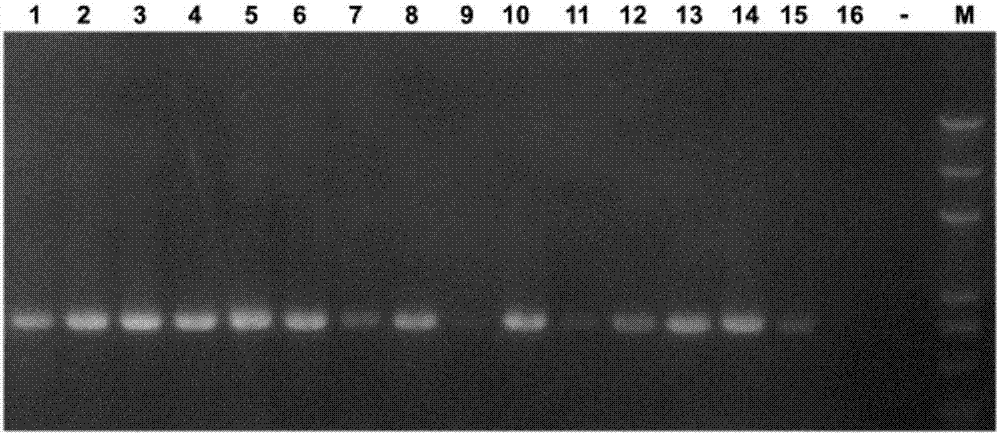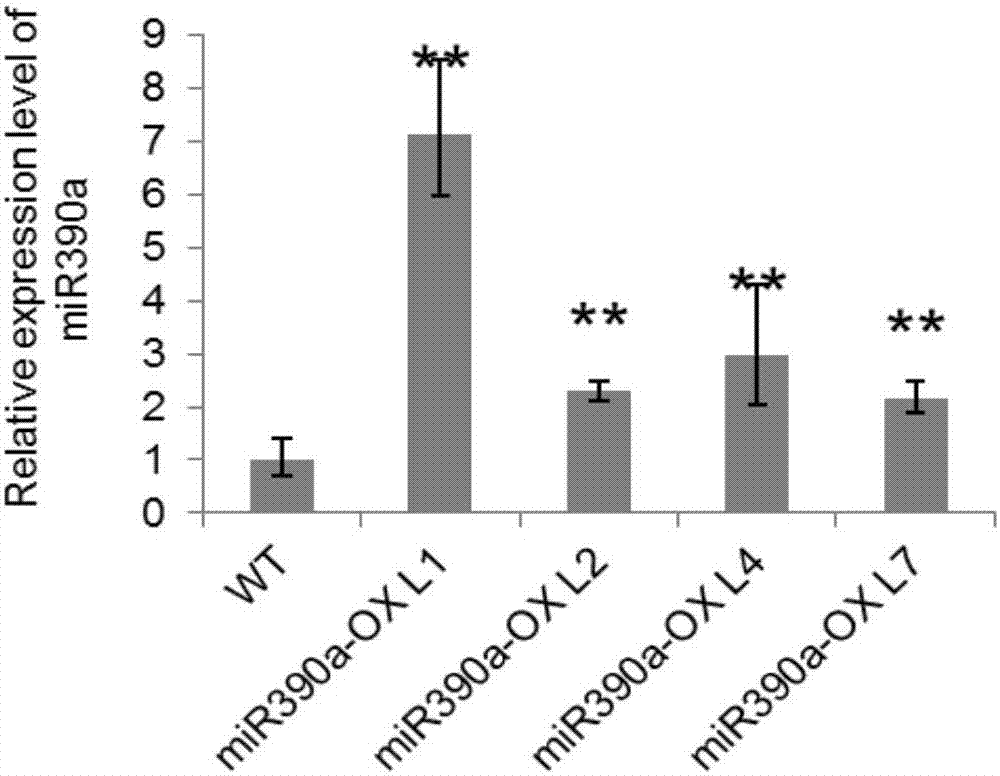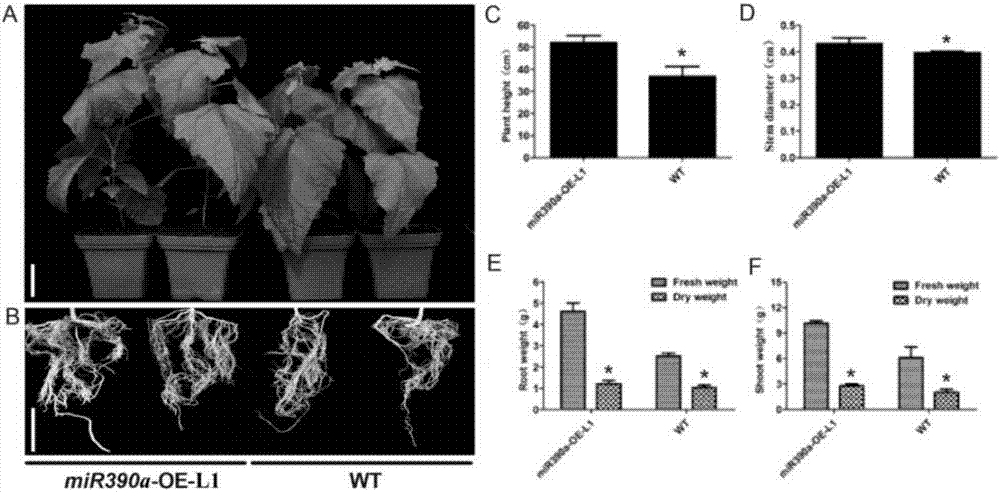Populus tomentosa gene PtomiR390a and its application
A technology of poplar tomentosa and gene, which is applied in poplar tomentosa gene PtomiR390a and its application field, can solve the problems of inability to achieve forest yield and salt tolerance, and achieve the effect of improving the ability of salinity and alkali stress and improving biomass
- Summary
- Abstract
- Description
- Claims
- Application Information
AI Technical Summary
Problems solved by technology
Method used
Image
Examples
Embodiment 1
[0029] Example 1 Poplar Total RNA Extraction and Reverse Transcription Synthesis of cDNA
[0030] 1. Poplar total RNA extraction
[0031] Using young poplar leaves as materials, the medicine spoon, pestle, mortar, etc. used in RNA extraction were burned with 95% alcohol until cooled before use. Take a spoonful of quartz sand and heat it in the heater for 10 minutes to cool down before use. 1.5mL centrifuge tubes, plastic products, etc. are all RNase-treated (RNase Free) AXYGEN products.
[0032] The total RNA was extracted according to the operation steps of Huashun Server-SPIN DNA-free Plant RNA Isolation Kit:
[0033] 1) Add lysate (500 μL RL+100 μL 10% PVP+10 μL 2-ME) into a 1.5 mL centrifuge tube;
[0034] 2) Mix young poplar leaves (100mg) and quartz sand under liquid nitrogen freezing conditions and quickly grind them into powder. Before the liquid nitrogen is completely volatilized, transfer all the powder to the pre-prepared lysate, and quickly blow with a pipette ...
Embodiment 2
[0048] The design of embodiment 2 PCR primers and PCR amplification obtain target fragment
[0049] 1. PCR primer design
[0050] Log in to miRBase (http: / / www.miRBase.com), and query the precursor sequence of the poplar PtomiR390a gene. Specific primers for the PtomiR390a precursor sequence were designed. The upstream primer PtomiR39a0-F sequence of the PtomiR390a fragment is: 5'-AGAATCTGTTAAGCTCAGGAG-3' (SEQ ID No.3), and the downstream primer PtomiR390a-R sequence is: 5'-AACCCATAGAACTCAGGATAG-3 '(SEQ ID No.4); the target fragment is 119bp.
[0051] Primers were synthesized by BGI (Beijing). The reaction reagents used in PCR are all TaKaRa products: dNTPMixture (2.5mM each), Taq DNA polymerase (5U / μL), with 10×PCR Buffer (0.1M Tris-HCl[pH8.3]), 0.5M KCl) and MgCl 2 (25mM).
[0052] 2. PCR amplification of the target fragment
[0053] Using poplar gDNA as a template to amplify the PtomiR390a gene fragment, the system for amplifying the PtomiR390a gene fragment:
[0054...
Embodiment 3
[0066] Example 3 PtomiR390a-pcxSN vector construction and transformation of Agrobacterium GV3101
[0067] After gel recovery of the amplified fragments, the vector pcxSN was digested with XcmI and ligated with the recovered fragments. The ligation product was transformed into Escherichia coli DH5α competent cells, and the target gene fragment was amplified by PCR and verified by enzyme digestion to obtain transformants, and the strains were preserved.
[0068] Extract the PtomiR390a-pcxSN plasmid from the positive transformant Escherichia coli respectively, and the steps follow the extraction steps of the Plasmid Mini Kit kit, and the specific operations are as follows:
[0069] 1) Take the bacterial solution cultured to the logarithmic phase in an EP tube, centrifuge at 13400rpm for 1min to collect the bacterial cells, and discard the supernatant.
[0070] 2) Add 250 μL of pre-cooled Solution I to which RNase A has been added, and vortex to resuspend the bacteria and mix wel...
PUM
 Login to View More
Login to View More Abstract
Description
Claims
Application Information
 Login to View More
Login to View More - R&D
- Intellectual Property
- Life Sciences
- Materials
- Tech Scout
- Unparalleled Data Quality
- Higher Quality Content
- 60% Fewer Hallucinations
Browse by: Latest US Patents, China's latest patents, Technical Efficacy Thesaurus, Application Domain, Technology Topic, Popular Technical Reports.
© 2025 PatSnap. All rights reserved.Legal|Privacy policy|Modern Slavery Act Transparency Statement|Sitemap|About US| Contact US: help@patsnap.com



